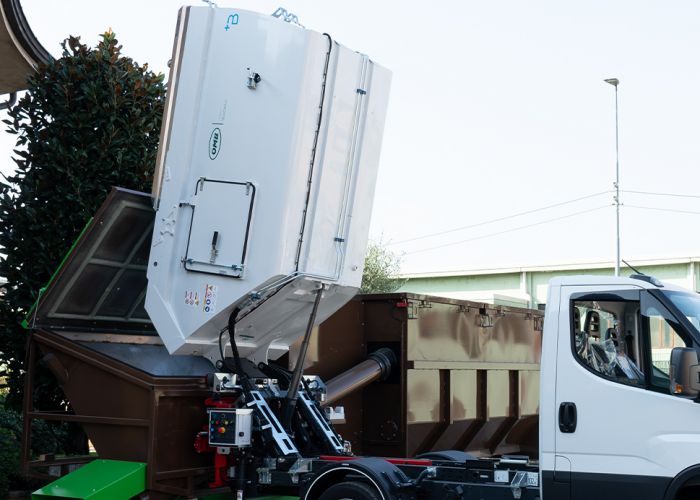Installation of electromechanical composters in municipalities:
delivery methods and types of composting
The choice of compost bin type and management method, as well as the type of composting (community or local), depends on the size of the municipality, population density and collection logistics.
Electromechanical composters are a valid alternative to traditional organic waste management, promoting the circular economy and the local exploitation of resources.
The installation of electromechanical composters in municipalities is an innovative and sustainable solution for organic waste management, contributing to the reduction of the volume of waste sent to treatment plants and the production of quality compost directly in the area.
They can be installed in different operational configurations, depending on the needs of the area and the collection methods.
Loading Systems:
Manual vs. Vehicle Loading System
Composters with manual loading system (direct user disposal)
These composters are designed to be used directly by citizens, who deliver organic waste independently.
Advantages :

They promote the active involvement of the population.
![]()
They are suitable for small towns and more isolated villages.
![]()
They do not require the use of vehicles for daily waste transport.
Composters with Vehicle Loading System (Delivery by Collection Vehicles)
In this case, loading is carried out by municipalised vehicles that collect organic waste door-to-door and deliver it to the composter installed at the municipal recycling centre.
Advantages:
![]()
Controlled management of delivery by operators.
![]()
Greater control over waste quality and plant management.
![]()
Capacity to treat larger volumes, suitable for urban contexts or more densely populated areas.
Community Composting
vs. Local Composting
Community composting:

Usually combined with manual loading systems that allow direct delivery by citizens.
![]()
It can be installed both in recycling centres and in locations throughout the municipal area.
![]()
Can be entrusted to local operators or volunteers.
![]()
Subject to specific regulations (e.g. Ministerial Decree 266/2016 to italian law).
Local Composting
This involves more structured systems that serve a larger portion of the population, while remaining within the municipality or a neighbouring area.
![]()
It can be integrated into the municipal collection system, often with loading by vehicles.
![]()
It allows waste to be treated directly at the municipal recycling centre.
![]()
There is greater control over waste and process management by operators.
![]()
Subject to specific regulations (Art. 214, paragraph 7-bis of Legislative Decree 152/06 to italian law).

 />
/>
 />
/>
 />
/>
 />
/>
 />
/>
